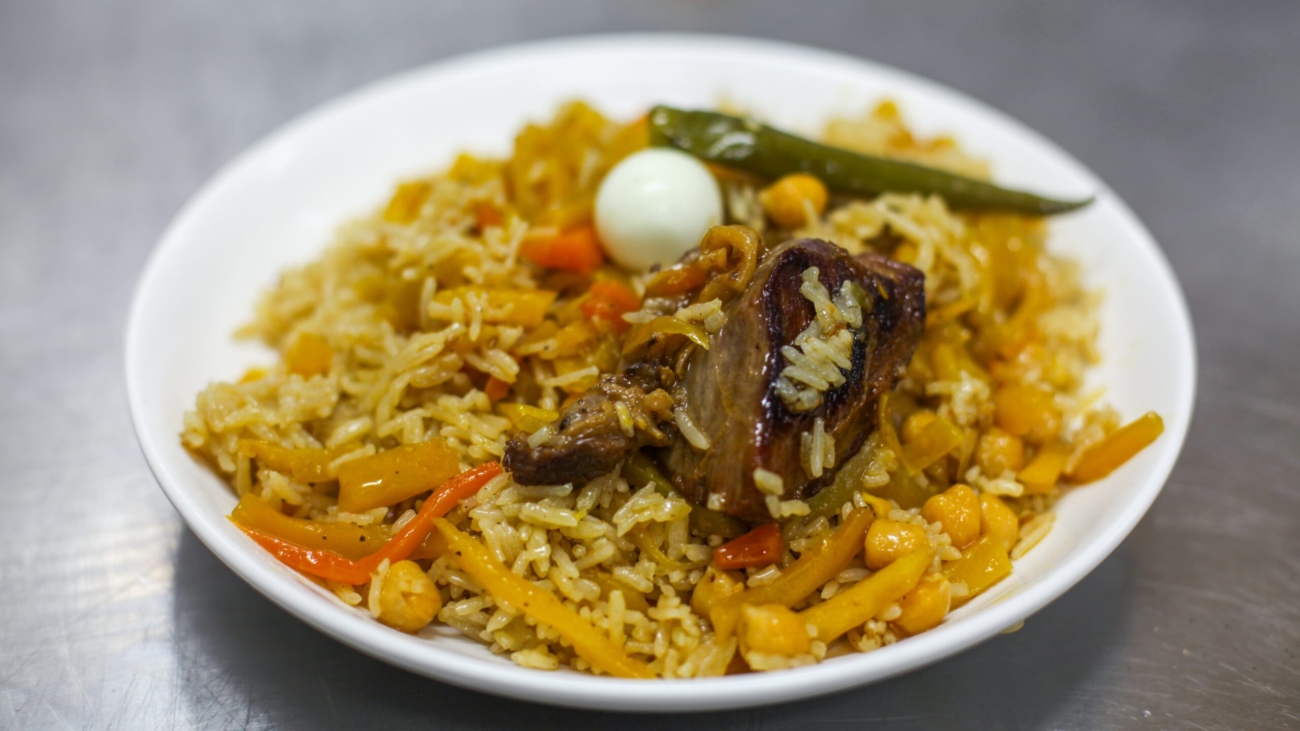Step off the beaten path and into the vibrant landscape of Uzbekistan’s traditional cuisine. With its diverse range of flavors, textures, and ingredients, this Central Asian nation boasts a culinary heritage that will leave you drooling for more. From succulent kebabs to hearty stews, each dish offers a unique blend of spices, aromas and bold colors that reflect the rich history and cultural influences of the region. So come on an exciting journey with us as we explore some mouth-watering dishes from Uzbekistan’s kitchen!
What is Uzbekistan’s Traditional Cuisine?
Uzbekistan is famous for its Amir Temur cuisine, which is a mix of Persian, Turkic and Central Asian flavors. The cuisine features mutton and beef, as well as Baklakhushi (a type of Uzbek pilaf) and other dishes. Uzbeks also love lamb kebabs and chicken skewers. Some of the more typical Uzbek dishes include:
1. Baklakhushi – This rice-and-meat dish is made with plenty of vegetables, typically including onions, carrots, garlic, tomatoes and chickpeas.
2. Kakar – This is a mixture of ground mutton or beef with spices such as cumin, cardamom pods and cinnamon sticks.
3. Khoresht – This is a stew made with lamb or beef, lentils, tomatoes and potatoes.
4. Koobideh – This Middle Eastern flatbread is stuffed with various toppings such as minced meat, chopped onions or fresh herbs.
5. Manti – These are little dough balls filled with minced mutton or beef in a savory sauce that’s usually served over steamed rice or naan bread (the koofiyya variety).
The History of Uzbekistan’s Cuisine
The rich and nutritious world of Uzbekistan’s traditional cuisine was once the bounty of nomadic herders and farming families. Over time, however, the Uzbek people have adopted a variety of influences, including those from neighboring countries, to produce a cuisine that is unique and complex.
Some of the most iconic Uzbek dishes include shirkhok (a type of dumpling), qormoz (a type of flatbread), qurut (a type of soup made from lamb or beef), kofta (minced lamb or beef balls) and samosas. Additionally, Uzbekistan is known for its khinkali (pan-fried dumplings filled with meat or vegetables), baklazhan (spicy fruits and vegetables in a yogurt sauce) and xitpicki (savory turnovers).
While there are many regional variations of these dishes, all share common culinary ingredients and techniques that have been passed down from generation to generation. For example, samosas are usually topped with onions or other vegetables Stewed meats, such as qormoz or kofta are often simmered in collagen rich broths such as mutton fat or chicken broth Baked goods such as khinkali and baklazhan are most often prepared using simple flour, milk, butter or yogurt combinations Desserts such as bastaniq sirr (dates stuffed with sugar syrup) or boloqoramunik (rice pudding with raisins) are also popular in Uzbekistan
The Nutritional Value of Uzbekistan’s Traditional Cuisine
Traditional Uzbek cuisine is characterised by its use of fresh, local ingredients and its emphasis on healthy eating. The country’s climate is favourable for the cultivation of fruits and vegetables, and many dishes incorporate herbs and spices that have been grown in the area.
There are a number of typical Uzbekian meals, all of which are hearty and filling. Breakfast might include bread with cheese or eggs, yogurt, boiled or roasted potatoes, or chapatti (flatbread). Lunch might consist of a sandwich made from bread or pastry filled with cucumbers, tomatoes, cheese, or meatballs. Dinner might include soup with meat or vegetables, rice pilaf with lamb or chicken, khoresht gorma (spicy green sauce served over rice), Tajik tea (), plov (mixed steamed vegetables), komatsuna (eggplant), or shashlik (barbecued lamb).
Uzbekistan’s traditional cuisine is rich in vitamins and minerals thanks to the country’s mild climate and plentiful agricultural resources. One example is the kebab somon , a dish made from ground beef that is marinated in onion, garlic, ginger, turmeric, cardamom pods, red pepper flakes, bay leaves and coriander seeds. This mixture imparts an intense flavour to the beef while providing vitamin C , iron , magnesium , copper and selenium . Other nutritional highlights of Uzbek cuisine include khoresht gorma (a spicy green sauce served over rice), Tajik tea (), and plov (mixed steamed vegetables).
Recipes for Uzbekistan’s Traditional Cuisine
Traditional Uzbek cuisine is a mix of Persian, Central Asian, Russian, and Turkish culinary traditions. Regional variations exist, but the mainstay of Uzbek food is hearty soups and stews cooked in beef, lamb, mutton or chicken broth. There are also numerous savory cookies (kulcha), pastries (papad), flatbreads (pita), and omelets made with eggs, onions, and various herbs and spices.
One way to sample traditional Uzbek cuisine is to explore the region’s many restaurants. Many offer prix-fixe menus that allow visitors to sample a variety of dishes from each of the twelve regions of Uzbekistan. Some notable restaurants in the U.S. include Bukhara Restaurant in Washington D.C., the Uzbeks’ House in Chicago, and Izakaya Sushi on Park Avenue in New York City.
Another option for tasting traditional Uzbek cuisine is to cook it at home using ingredients found in most grocery stores across America. One example is pulao (rice pilaf), which can be made with saffron-infused chicken broth or lamb broth simmered with tomatoes and fresh ginger; daal (lentil soup), filled with garbanzo beans, potatoes and meat; or khinkali—a skewer-based dish made from hand-cut lamb or pork seasoned with cumin, chili powder and salt served over a bed of spiced rice flour dough.
Conclusion
When it comes to cuisine, there are few countries more diverse than Uzbekistan. Spanning the ranges of Central Asia and encompassing a vast array of climate conditions, this country has long been known for its gastronomic diversity. From famed Uzbekistani dishes like khorovat and suzhiq Kobuz to unique Kyrgyz fare, there is something on the menu for everyone interested in Trying traditional Uzbek cuisine. With Uzbeks being such a ethnically diverse group, you’re likely to find something delicious on the menu that you’ve never tried before. Better yet, explore some of its lesser-known delicacies – they are definitely worth a try!

